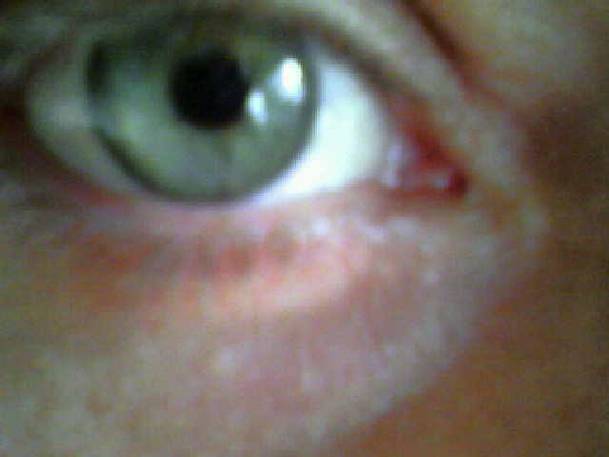


“Hillary’s Tears” draws 267,000 hits on Google, and the front page of the January 10th New York Times next to an article on the war in Congo; leading me to revisit lessons learned on race and tears, and question what lacrimoniousnous composed her white woman’s eye and what any of it means. We wasted enough time obsessed on her husband’s body fluids, we as a nation don’t have time for hers. Here’s my particular journey.
When I got my first Rockefeller grant, my father laughed and said two things to me from the boiler room of the mental home where he lived, one-- “What kind of artist are you a con-artist?” and two -- “when are you getting money from the Kennedys?” His sarcasm struck the chord within me that is a tug-of-war between work and bullshit. My father was an iceman a boiler repairman and a marine. He knew how to save your life, make sure you had heat in the winter, shoulder three hundred pounds of coal and ice up and down staircases, take a bullet. Although my father stopped talking to me for a few years after I began to write memoir, he secretly wrote memoir in the isolated last years of his life and I less secretly retained his working class antennae for the bullshit I am prone to.
The grant was to fund a performance project in The Arthur Avenue Retail Market in the Bronx. I made live opera based on the oral history of pushcart peddling, amidst a combination of images that triggered me: soppressata, provolone, La Madonna and Mussolini, Yankee action photos, pin-ups, cuts of meat and goat heads, the Nina Pinta and Santa Maria and Pacino and Brando’s headshots, and being surrounded with chandeliers of papparule which gave me an overarching feeling of safety in the surety that one day I would get burned, in one way or another.
More Rockefeller dollars came my way in terms of The Next Generation Leadership Fellowship, which drew fellows from diverse sectors of society and funded our conversations and projects regarding solutions to problems of democracy. Good projects came out of the subgroups: a website for day laborers services, a Mandela Garden project where you can write and bury notes about your life… and perhaps most importantly gorgeous arguments that never got reconciled. Five years in, I found myself participating in a nine person group process called Cooperative Inquiry, which was the third methodology after Tavistock, and How to Have Difficult Conversations that the fellowship tried to put some ropes and cushions around radically different individual beliefs and values. I was the only Italian out of the hundred twenty-five members. My communication style and assertion that my campesino grandfathers weren’t slave owners got me stereotyped by two Chicano activists as being of the same mindset of Antonin Scalia and a genocidal Columbus.
The make-up of the Cooperative Inquiry group were: three white, two black, two Asian, two Native American. When we faced each other in a circle, our discussions inevitably focused on race privilege. We traveled to the cities of the group members: Anchorage, L.A., New York. Chicago, and through all our travels the defining moment in the life of the group was the one moment, or “rupture” as we came to call it, when two of the white women cried in a go-around called “Hierarchies of Influence,” a reportage to the group how you felt within the power dynamics the group expressed. Did you feel your voice was influential in the group’s decisions and process? Were you heard? Seen? This is when the other two white women besides myself began crying, expressing that they didn’t feel as highly influential in this mixed group as they were used to within their own sectors where they were leaders of organizations. That’s my take on it, reductively speaking. (For a full report you can search the website of the NYU Wagner School of Leadership, Research Center on Leadership in Action: “Got Privilege” group)
Now, when the white women cried, I observed the people of color sit back reticently in their chairs and as they later reported feel somewhere between cautious optimism and here we go again disappointment about the incident of white people taking the space to cry and how that would change the course for the life of the group. We processed that moment for months. The people of color reported that as a rule they never cried in mixed race groups, and in the rare instance they did, the group didn’t process it after that. My role as an Italian was between being white, yet with a “pass” into the group of color. It was me who voiced, “I’m tired and uncomfortable being in these groups where the white people end up crying.” So, I was seen as a race traitor to the whites, and a white person who recognized the macro dynamic.
After Hillary’s tear or two got national attention, I thought she too was mourning her own position in the “hierarchy of influence” after the Iowa caucus. What were people of color saying in the media if anything about this moment? Again I feel uncomfortable with this white woman’s tear, and all the attention her one tear got. There’s plenty of injustice to cry about. But that’s not the content of her tears. I don’t think she’s crying for any of us. I feel embarrassed being a white woman. Impotent. Tears indicate we can do no more than cry. Wailing is as old as prostitution, as necessary and as cleansing. I don’t want any part of it. I’m sure there’s a sfragganizze, some old peasant wisdom, for this, if only I knew it.
Source URL: http://test.casaitaliananyu.org/magazine/focus/op-eds/article/hillarys-tears-caucasian-lacrimation
Links
[1] http://test.casaitaliananyu.org/files/12921067annie-eye1200168319jpg